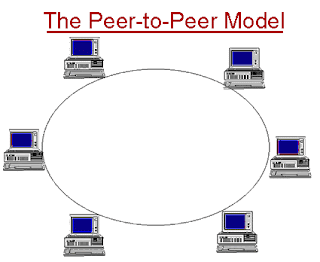DEFINITION
- The design of computers, devices, and media on a network is sometimes called the network architecture.
- There are two categories of network architecture :
- Peer-to-peer
- Client-server
PEER-TO-PEER
- Is a simple, inexpensive network, typically connects fewer than 10 computers.
- Each computer, called a peer, has equal responsibility and capabilities in sharing hardware.
- Each computer on a peer-to-peer network shares its hardware and software with other computers on the network.
- It describes an Internet network on which users access each other's hard disks and exchange files directly over the Internet.
- Each peer, stores files on its own storage devices.
CLIENT-SERVER
- A network in which the shared files applications are stored in the server and network that request services from the server.
- One or more computers act as a server and the clients access the server ; highly capable computer on the network.
- A server controls access to the hardware, software and other resources on the network.
- The other computers on the network, called clients request services from the server.
ADVANTAGES & DISADVANTAGES
ADVANTAGES
|
DISADVANTAGES
|
|
PEER-TO-PEER
|
|
|
CLIENT-SERVER
|
|
|




No comments:
Post a Comment